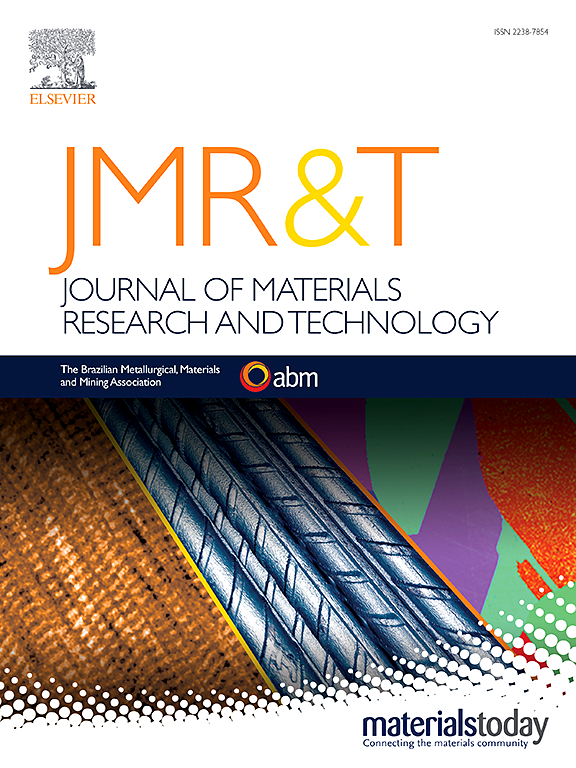Steady states in severe plastic deformations and microstructure at normal and high pressure
IF 6.2
2区 材料科学
Q1 MATERIALS SCIENCE, MULTIDISCIPLINARY
Journal of Materials Research and Technology-Jmr&t
Pub Date : 2025-03-12
DOI:10.1016/j.jmrt.2025.03.060
引用次数: 0
Abstract
The main fundamental problem in studying plasticity and microstructure evolution is that they depend on five components of the plastic strain tensor εp, its entire path , and pressure p and its path ppath, which leaves little hope of finding some general laws, especially at severe plastic straining and high pressures. Here, we review the validity of the following hypothesis for quasi-static material behavior after some critical level of cold severe plastic strain and some straining paths: initially isotropic polycrystalline materials behave like perfectly plastic, isotropic, and strain-path-independent with the corresponding limit surface of perfect plasticity and reach steady values of the crystallite/grain size and dislocation density, which are strain- and strain-path-independent. However, there are multiple steady microstructural states and corresponding limit surfaces of perfect plasticity. The main challenge is to find for which classes of loading paths and p path material behaves along the same limit surface of perfect plasticity and steady microstructural state and for which loading paths and ppath there is a jump to the different limit surface of perfect plasticity and steady microstructural state. Various experimental, computational, and coupled experimental-computational techniques are analyzed, and some controversies and challenges are summarized.
正常和高压下剧烈塑性变形的稳态和微观结构
塑性与微观组织演化研究的主要根本问题在于它们依赖于塑性应变张量εp、整个路径ε路径和压力p及其路径的5个分量,很难找到一些普遍规律,特别是在强塑性应变和高压条件下。在此,我们回顾了以下准静态材料行为假设的有效性,即在冷强塑性应变达到一定临界水平和某些应变路径后:最初各向同性多晶材料表现为完全塑性、各向同性和应变路径无关,具有相应的完美塑性极限面,并达到与应变和应变路径无关的晶体/晶粒尺寸和位错密度的稳定值。然而,存在多种稳定的微观组织状态和相应的完美塑性极限面。主要的挑战是找出哪类加载路径ε路径和p路径材料沿着完美塑性和稳定微观组织状态的同一极限面,以及哪类加载路径ε路径和p路径会跳到不同的完美塑性和稳定微观组织状态的极限面。分析了各种实验、计算和实验-计算耦合技术,并总结了一些争议和挑战。
本文章由计算机程序翻译,如有差异,请以英文原文为准。
求助全文
约1分钟内获得全文
求助全文
来源期刊

Journal of Materials Research and Technology-Jmr&t
Materials Science-Metals and Alloys
CiteScore
8.80
自引率
9.40%
发文量
1877
审稿时长
35 days
期刊介绍:
The Journal of Materials Research and Technology is a publication of ABM - Brazilian Metallurgical, Materials and Mining Association - and publishes four issues per year also with a free version online (www.jmrt.com.br). The journal provides an international medium for the publication of theoretical and experimental studies related to Metallurgy, Materials and Minerals research and technology. Appropriate submissions to the Journal of Materials Research and Technology should include scientific and/or engineering factors which affect processes and products in the Metallurgy, Materials and Mining areas.
 求助内容:
求助内容: 应助结果提醒方式:
应助结果提醒方式:


